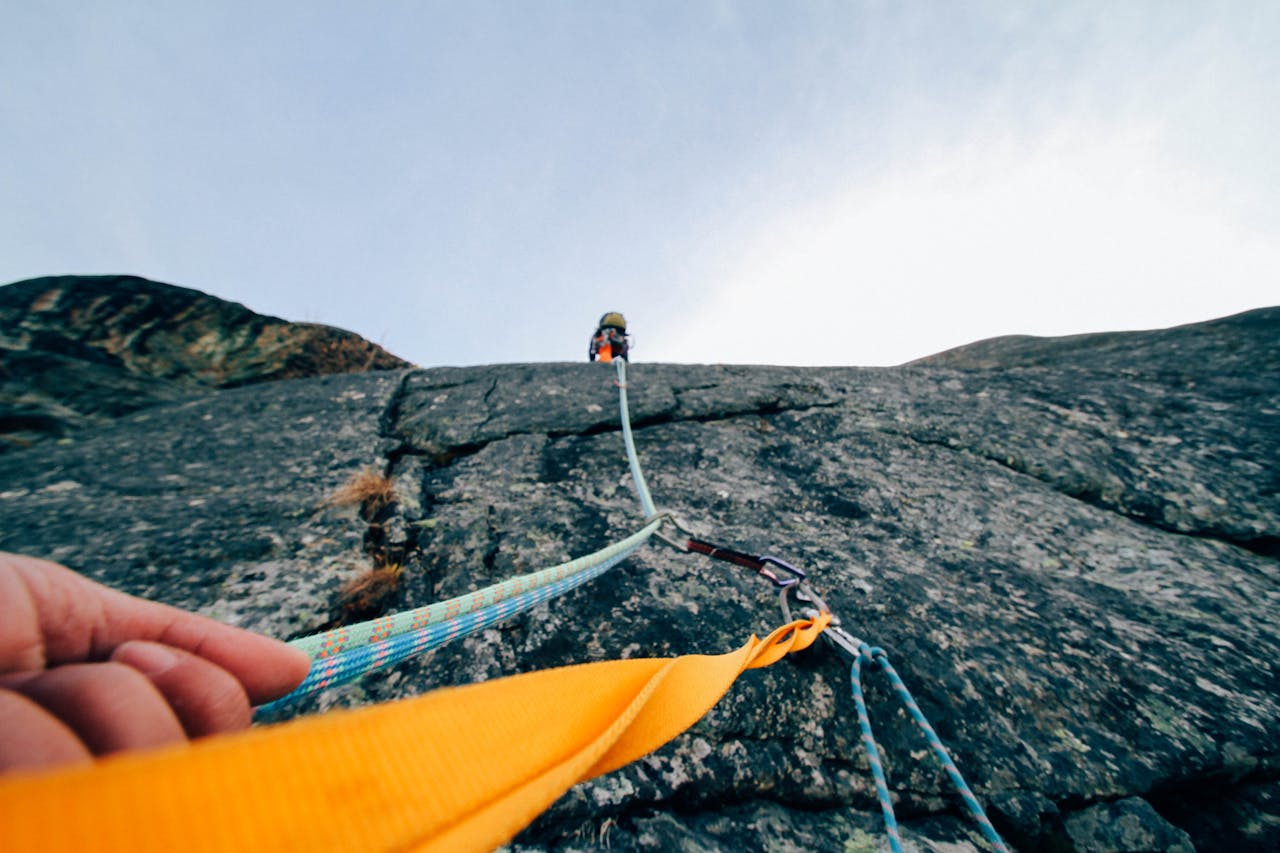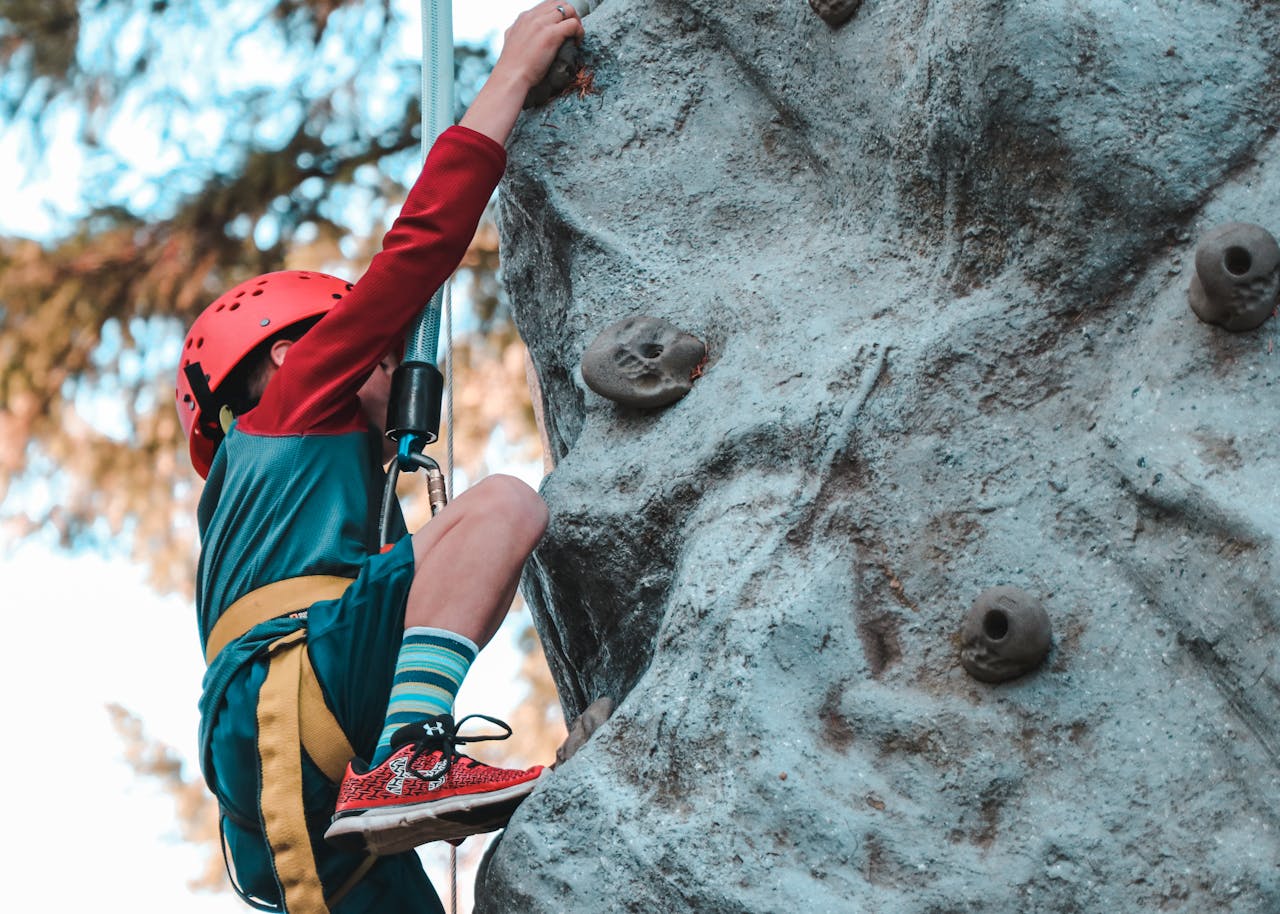Rock Climbing: Getting Started and Finding the Best Spots
Rock climbing is an exciting, challenging sport that combines physical endurance, mental strength, and a love for adventure. Whether you're interested in indoor climbing or tackling natural cliffs, here’s a guide to help you get started and find the best spots for climbing.

Understanding the Basics of Rock Climbing
-
Types of Climbing:
-
Bouldering: Climbing short, challenging routes without ropes, usually on large rocks or artificial walls.
-
Top-Roping: The climber is attached to a rope anchored at the top of the route, with a belayer on the ground.
-
Sport Climbing: Climbing routes with fixed anchors and protection that climbers clip into as they ascend.
-
Trad (Traditional) Climbing: Climbers place their own protective gear into the rock as they climb.
-
Free Soloing: Climbing without ropes or safety gear—only for highly experienced climbers.
-
Essential Gear:
-
Climbing Shoes: Close-fitting shoes that provide friction and sensitivity on the rock.
-
Chalk and Chalk Bag: Keeps hands dry to improve grip.
-
Harness: Used for roped climbing, attaching to the rope and belay device.
-
Belay Device: A mechanical device to control the rope during climbs.
-
Helmet: Protects against falling rocks or equipment.
-
Rope and Carabiners: Essential for safety in roped climbing.
Building Basic Climbing Skills
-
Focus on Technique: Beginner climbers should practice foot placement, balance, and body positioning to climb efficiently.
-
Strength Training: Core and grip strength are essential for stability on climbs. Exercises like pull-ups, planks, and finger exercises can help.
-
Learn to Belay Safely: Belaying involves managing the rope for another climber. It's critical to practice and, if possible, get certified.
-
Practice Falling: Knowing how to fall safely is a vital skill, especially in bouldering. Learn to roll as you land and aim for controlled falls.
Getting Started Indoors
-
Indoor Gyms: Indoor climbing gyms are ideal for beginners to practice technique, build strength, and learn in a controlled environment. Most gyms offer classes, equipment rentals, and various climbing walls.
-
Join a Class or Group: Many gyms offer beginner classes that cover the basics of climbing and safety. Group classes or meetups are also a great way to learn from others and make friends.
-
Gradually Increase Difficulty: Gyms have different levels or grades of routes (often called "problems" in bouldering). Start easy and work your way up as your skills improve.
Transitioning to Outdoor Climbing
-
Take a Course: Outdoor climbing differs significantly from indoor climbing. A class or guided trip can help you understand route setting, safety, and environmental ethics.
-
Learn Outdoor Ethics: Respect the environment by practicing Leave No Trace principles—pack out trash, stay on trails, and avoid damaging flora and fauna.
-
Know the Grading Systems: Outdoor climbing grades vary based on location. In the U.S., the Yosemite Decimal System (YDS) is commonly used, with routes ranging from 5.0 (easiest) to 5.15 (extremely difficult).
Top Climbing Destinations for Beginners and Experienced Climbers
For Beginners
-
Yosemite Valley, California: While known for big walls, Yosemite has beginner-friendly routes like the Swan Slab and Five Open Books areas.
-
Red River Gorge, Kentucky: Offers a mix of sport and trad climbs with grades suitable for all levels.
-
Smith Rock, Oregon: Great for beginners and advanced climbers alike, with sport routes and beautiful views.
-
Joshua Tree, California: Known for its trad climbing routes, Joshua Tree also has a variety of easy-to-moderate climbs for learning outdoor skills.
For Intermediate to Advanced Climbers
-
Rocklands, South Africa: A premier bouldering destination, with a wide range of problems across skill levels.
-
El Capitan, Yosemite: Home to challenging big wall routes like The Nose, suitable for experienced climbers.
-
Ceüse, France: Known for steep, technical sport climbing routes with stunning views of the French Alps.
-
Patagonia, Argentina and Chile: Offers challenging multi-pitch climbs in the Torres del Paine region with stunning natural beauty.
Staying Safe While Climbing
-
Inspect Gear Regularly: Always check your harness, rope, and carabiners for wear and damage.
-
Climb with a Partner: Climbing with someone who can belay and assist in emergencies is essential for safety.
-
Stay Hydrated and Take Breaks: Climbing is physically demanding; drink water, rest, and listen to your body.
-
Monitor Weather Conditions: Especially when climbing outdoors, check the forecast to avoid rain, snow, or lightning, which can make climbs dangerous.

Advancing Your Climbing Skills
-
Practice Lead Climbing: If you’re experienced with top-roping, learning to lead climb can open up more challenging routes and improve your confidence.
-
Work on Mental Training: Climbing often involves overcoming fear. Visualization, breathing exercises, and setting small goals can help.
-
Experiment with Different Climbing Styles: Trying various types of climbing, like bouldering, trad, and sport climbing, can improve your versatility.
Becoming Part of the Climbing Community
-
Join a Club: Climbing clubs offer resources, events, and experienced climbers who can teach skills and share gear.
-
Use Climbing Apps: Apps like Mountain Project or Vertical-Life can help you find routes, track your climbs, and connect with other climbers.
-
Attend Climbing Festivals: Events like the Red River Gorge’s Rocktoberfest or the International Climbers' Festival bring together climbers of all levels for climbing, workshops, and socializing.
Conclusion
Rock climbing is as much about personal growth and mental resilience as it is about physical strength. With the right equipment, practice, and a strong respect for the environment, anyone can start climbing and enjoy the unique challenges it offers. By starting with the basics and gradually pushing your limits, you’ll not only improve your skills but also discover a community and world of adventure that make climbing so rewarding.












